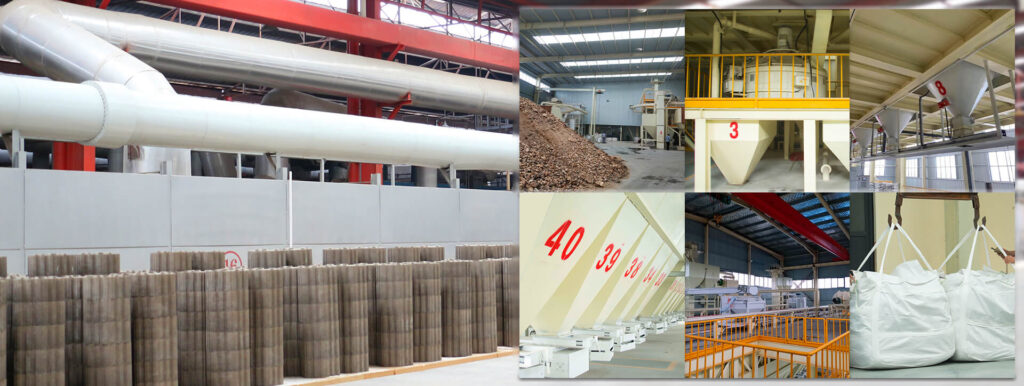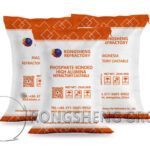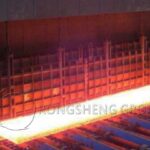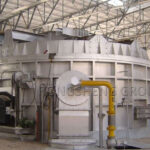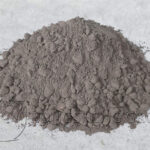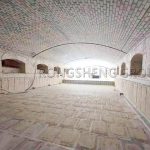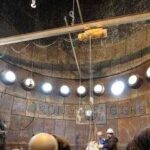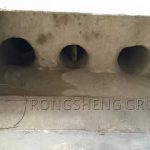Plastic Refractory, is a kind of monolithic refractory, consisting of 70% to 80% granular and powdery materials and 10% to 25% plastic clay and some amount of plasticizers. Plastic refractory is usually used in the heating furnaces, soaking furnaces, annealing furnace, sintering furnace and electric furnace roof in the iron and steel industry. If you want to buy plastic refractory for your furnace lining, Email RS Refractory Materials Company for cheap and qualified plastic refractory. Contact RS Now!
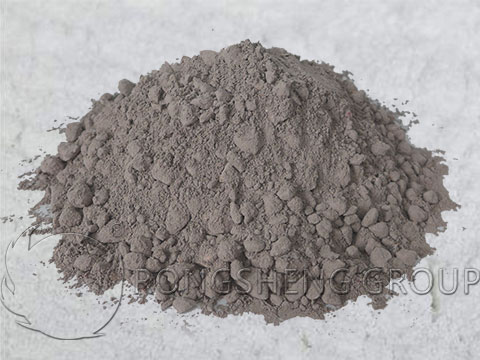
Plastic Refractory Material Meaning
Plastic refractory material is paste-like, and maintains high plasticity for a long time. Plastic refractory material contains more plastic clay components and more water than ramming mass materials. Plastic refractory has good plasticity before hardening and has certain strength after hardening. Plastic refractory has good sintering property, certain volume stability and other high temperature properties at high temperature. Plastic refractory can be made into sheets and blocks. Some binders can also be added to the construction. When used, compacting or tamping the mixture and this will form dense lining and structure after baking.
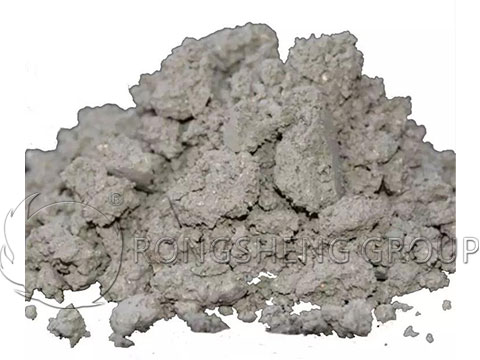
Application Of Plastic Refractory
In The Top Of Heating Furnace
The top of the reheating furnace is the place where the temperature of the reheating furnace is the highest and the air flow damage is the most serious. No matter it is the preheating section, the heating section or soaking zone, the furnace top of the reheating furnace has different defects from the former refractory brick hanger to the latter refractory castable furnace top. The refractory brick hanging on the top of the furnace has poor air tightness and large heat loss; the uneven surface of the brick increases the flow resistance of the air flow, which is not conducive to thermal radiation and low heat utilization. The overall performance of refractory brick hanging roof is poor, and is easy to fall. Although castable refractory has overcome many shortcomings of refractory brick hanger, the thermal shock resistance of castable refractory is poor. The erosion in the heating furnace is serious. But plastic refractory has good thermal shock resistance and can be widely applied to the top of heating furnace.
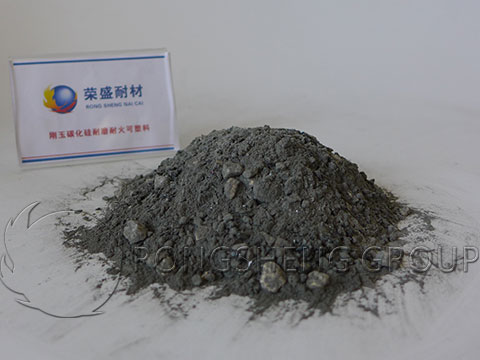
In The Cement Kiln
As a cement kiln lining refractory material, monolithic refractory are effective in all parts. Castable refractory, in addition to ordinary castable, there are dry spray castable, wet paint castable, etc. Unlike castable refractory, plastic refractory can be maintained after construction without bursting. Plastic refractory spraying construction method, can be used in all kinds of kilns and incinerators.
Plastic Refractory Classification
- Depending onthe refractory aggregate, plastic refractory is divided into clay, high alumina, corundum, silica, magnesium, chromium, zircon and silicon carbide plastic
- Depending onthe type of binder, plastic refractory can be divided into: sodium silicate, phosphate, silicate and organic bond plastic
- Depending onthe hardening method, plastic can be divided into: air hardening or heat hardening plastic
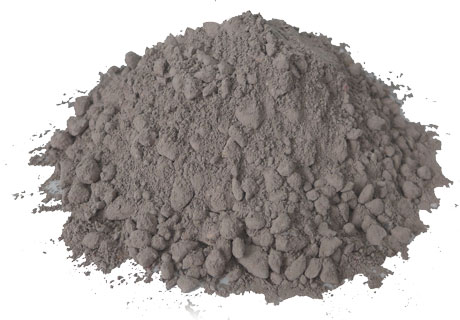
Heat Hardening Plastic Refractory
Thermosetting plastic refractory or heat hardening plastic refractory mainly uses 85% phosphoric acid or aluminum phosphate as the binding agent. Before use, as the solution is easy to react with iron in the fine powder to accelerate plastic hardening speed, so a certain amount of inhibitors, preservatives and other additives must be added. The main types of addictives include oxalic acid, tartaric acid, molasses, citric acid, NH-66, lignosulfonate, among which oxalic acid and tartaric acid have better effect. Hot hardening plastic refractory has the characteristics of high strength at ambient temperature and high temperature, good thermal shock resistance, strong peel resistance. Plastic refractory is especially suitable for areas with high strength requirements.

Air Hardening Plastic Refractory
Generally, aluminum sulfate is used as binding agent for air hardening plastic refractory. Since the price of aluminum sulfate is only about 15% of the aluminum phosphate, the cost of air hardening plastic refractory is relatively low. The storage time of air hardening plastic refractory is longer than 12 months. Air hardening plastic refractory does not need to be bogged. The binder solution can be directly added to the material and stirred evenly. The disadvantage of air hardening plastic refractory is that the strength at room temperature and high temperature is lower than that of heat hardening plastic refractory.
Plastic Refractory Manufacturing Process
After mixing the plastic refractory, some water has not been able to infiltrate into the aggregate because of the short mixing time, all sticky on the surface of the aggregate. If the material is not bogged, it can directly influence the plasticity of the plastic refractory, affecting the construction of the site. Other commonly used binders, such as aluminum sulfate, react chemically with iron in the powder to produce hydrogen gas, causing the mud to bubble or expand. In order not to affect the use of performance, plastic refractory need to be bogged.
Properties Of Plastic Refractory
- Plasticity index
The plasticity index of general plastic can be controlled at 15%-40%, but usually 20%-35% is used. The mud with plasticity index less than 20% is hard and dry, and the construction is difficult. The mud with plasticity index more than 35% is too soft and difficult to bog and the heating shrinkage is also large.
Various Cheap Plastic Refractory In RS Factory! Interested? Contact Us Now!
- Plastic refractory linear change rate
The linear change rate of the plastic refractory has great influence on plastic refractory. Large linear change rate can lead to cracks, falling blocks, fleeing fire, smoke, and serious wall collapse may occur as a whole.
- Structural strength of plastic refractory
The structural strength of the general amorphous refractory depends on three binding forces: A.The binding force of the binding phase itself. B.Binding force between the binding phase and the aggregate phase; C The binding force of the aggregate phase particle itself (crystal phase and crystalline phase and amorphous phase). If A < B and C, the material breaks through the bonding phase under the action of the maximum stress that the material can bear. If B < A and C, the material breaks along the combination with the aggregate and biding phase. If C < A and B, then the material must break through the aggregate phase particles.
The aggregate phase is aggregate, and the binding phase is the powder phase. In general, the bonding strength of aggregate phase is greater than that of powder phase, so the structural strength of plastic refractory is controlled by the bonding phase. Binding agent is the main component determines the structural strength of plastic refractory.
Qualified Plastic Refractory For Sale In RS Factory! Interested? Contact RS!
- Thermal shock resistance of plastic refractory
The quality of thermal shock determines whether the furnace wall is flaking or falling off. The thermal shock resistance performance of plastic refractory is generally better than the same material refractory bricks and other monolithic refractory materials. The main reason is that the aluminum siliceous in the heating process and the use of high temperature will not cause the deformation made by the crystalline transformation. The mineral composition of the heating surface is mullite and quartz microcrystal, and the amount of glass phase is small. The physical properties of the structure and phase of the heating face to the low temperature side are changing gradually not violently.
Plastic Refractory For Boiler
Plastic refractory for boiler is common for the construction of boiler combustion chambers because of the properties of plastic refractory. Plastic refractory has good wear resistance, high structural strength, good thermal shock stability and easy construction.
Plastic Refractory Manufacturer
Plastic refractory manufacturer, RS Refractory Materials Company has the ability to produce various kinds of high quality plastic refractory materials, like thermosetting plastic refractory (with high strength and good wear resistance performance), air hardening plastic refractory (good performance and low price) and sprayed plastic refractory (high construction efficiency and low labor intensity). Come and buy plastic refractory from RS Plastic Refractory Manufacturer with low price and good performance. Click RS for price list!

